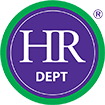
Many businesses choose to provide annual flu injections to lower the risk of an outbreak affecting operations. But in some sectors, businesses need to look beyond seasonal illnesses and consider occupational ill health specific to what they do.
This is a legal requirement which is enforced by health and safety legislation. If it is relevant to you, there will be strict processes you need to go through.
Occupational ill health
Occupational ill health is a major problem. The latest figures from the Health and Safety Executive (HSE), relating to the 2017/18, show that 1.4 million people are suffering from work-related ill health.
The HSE cite respiratory diseases, skin diseases, asbestos-related disease, cancers, noise-induced hearing damage, hand-arm vibration syndrome, musculoskeletal disease and stress as particular examples of workplace ill health. And they single out respiratory diseases and occupational cancers as two priority areas they focus on.
It is often harder to manage workplace ill health compared to workplace injury. This is because the symptoms of ill health may only become apparent long after the workplace exposure, sometimes decades later.
The stark truth is, though, that there are 13,000 deaths each year attributed to past workplace exposure, and in 2017/18, 26.8 million working days were lost to work-related ill health.
Examples of occupational ill health control measures
Those numbers speak for themselves. Left unchecked, a workplace can have life-changing or even fatal effects on workers now or in the future. And there is an impact on business operations too, as well as a risk of prosecution. So let’s look at the kind of processes you’ll need to adopt, with an example which will be relevant to sectors like manufacturing.
Manufacturing is considered a medium risk sector in health and safety terms, and certain activities will come with the risk of occupational ill health. One example of this is the risk of noise-induced hearing damage. This is covered by the Control of Noise at Work Regulations 2005.
These regulations require you to evaluate the risks posed by noise to your staff; take action to reduce the noise exposure; provide staff with ear protection where noise reduction can’t be achieved by other methods; ensure legal noise limits are not exceeded; provide staff with relevant training, information and instruction; and undertake health surveillance.
Broadening this approach out
Remember, that is intended only as a very high level look at the kind of processes you are required to go through to manage one specific occupational ill health risk. Each of those stages requires careful thought as how to achieve the best results. And an equivalent process will have to be carried out for alternative risks of ill health that are relevant to your business.
High risk sectors like construction or agriculture may have multiple, serious threats to ill health. For low risk sectors like offices or store fronts it may not be an issue or there may be just one health factor to consider.
Prosecutions for failing to manage occupational ill health
This February (2019), the HSE reported their prosecution of a housing association that failed to manage exposure to vibration. This led to one of its employees being diagnosed with Hand Arm Vibration Syndrome (HAVs).
The condition was caused by the use of gardening tools. The housing association did not carry out appropriate risk assessments and so never understood the extent to which employees were exposed to vibration. Therefore they did not put suitable control measures in place. The fines and costs that they had to pay totalled nearly £25,000.
Need help controlling occupational ill health risks?
Whether you need help with risk assessments or in determining what control measures need to be implemented to protect staff from ill health, our experts across the UK can help. Give the team a call today.
